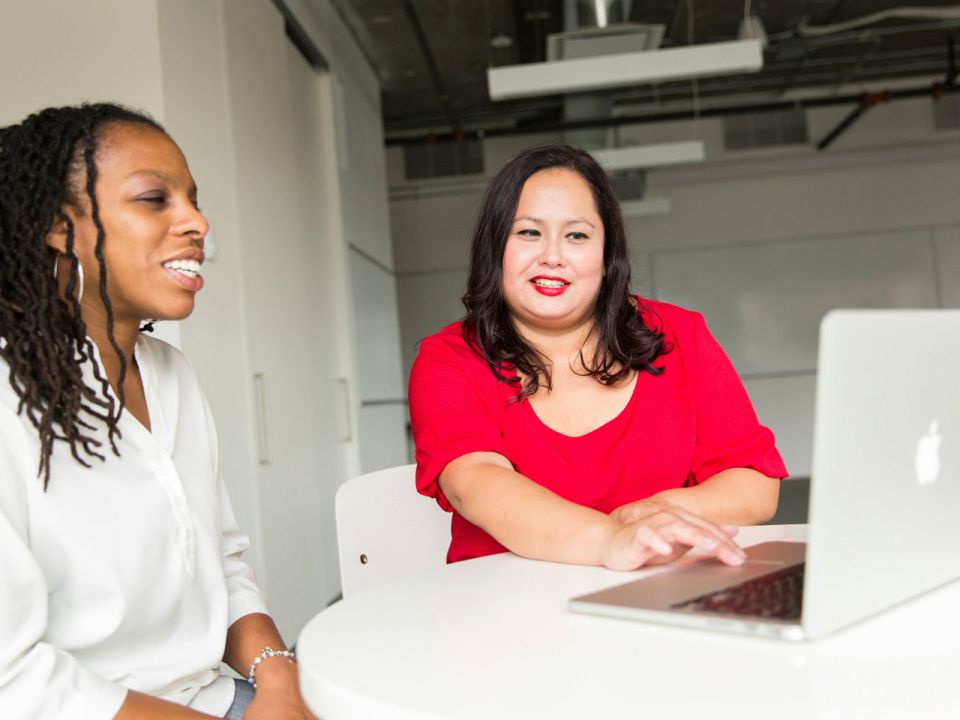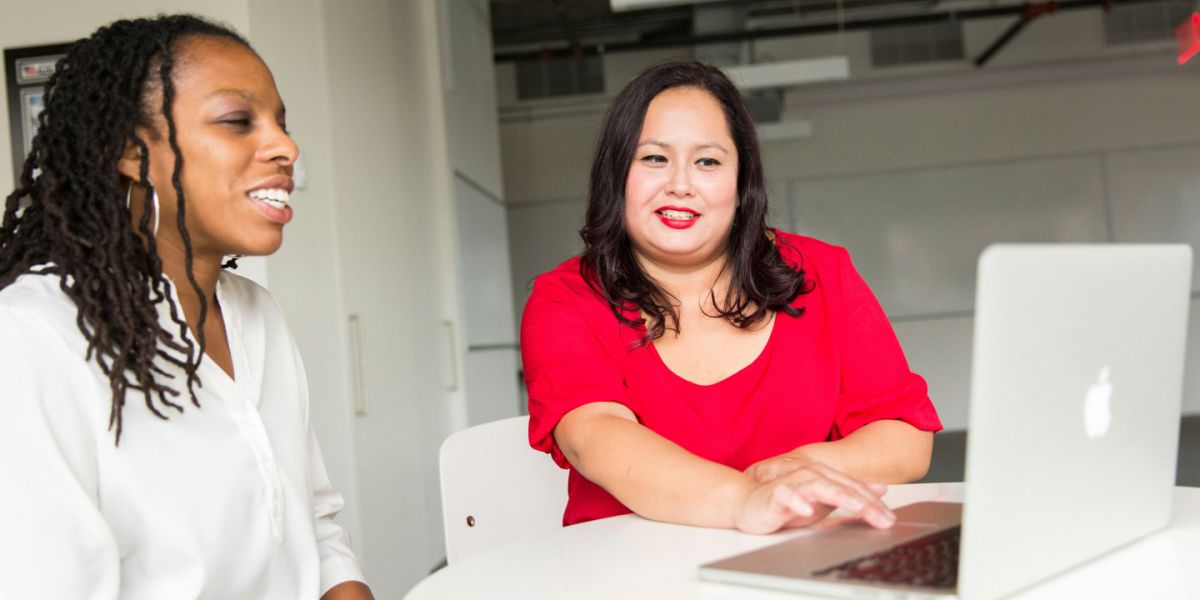

Reverse Mentoring: A Strategic Guide for Inclusive Leadership
Reverse mentoring is an innovative approach to leadership development that challenges traditional hierarchies. It involves junior or underrepresented employees mentoring senior leaders, encouraging mutual learning, cultural exchange, and a deeper understanding of inclusion. In this setup, knowledge flows both ways, but the real benefit lies in the fresh perspectives offered to senior decision-makers.
As UK organisations strive to create more inclusive workplaces in 2025, reverse mentoring has emerged as a powerful tool to bridge generational, digital, and cultural divides. It goes beyond symbolic gestures by delivering practical insights and tangible outcomes for both individuals and the business as a whole.
At Macildowie, we have supported organisations across the East Midlands and Home Counties in embedding reverse mentoring into their wider people strategy. Our expertise in leadership development, culture change, and employee engagement ensures that reverse mentoring initiatives are more than just well-meaning projects - they become high-impact drivers of change.
What Is Reverse Mentoring?
Concept & Origins
The idea of reverse mentoring gained traction in the late 1990s when Jack Welch, then CEO of General Electric, initiated a programme to help senior executives learn about emerging digital technologies from younger employees. Initially designed to boost digital literacy, the model quickly revealed wider benefits, particularly around breaking down silos and promoting mutual respect.
Since then, reverse mentoring has evolved into a key component of diversity, equity and inclusion (DE&I) strategies. It facilitates open dialogue between employees from different generations, cultures, and backgrounds. This interaction fosters greater understanding, improves communication, and gives senior leaders a window into the lived experiences of people they may otherwise not hear from.
How It Differs from Traditional Mentoring
In traditional mentoring, the mentor is typically a more experienced professional who provides guidance and support to someone earlier in their career. Reverse mentoring turns this relationship on its head. Here, the mentor is often younger or from an underrepresented group, while the mentee is a senior leader.
The purpose is not to advise on career advancement but to share insights that help leaders grow in empathy, cultural awareness, and digital competence. This reversal of roles challenges hierarchical norms and promotes a learning culture where everyone, regardless of their seniority, has something valuable to contribute.
Why Reverse Mentoring Matters in 2025
Solving Real Business Challenges
Organisations are facing a wave of complex challenges linked to inclusion, digital transformation, and intergenerational workforce dynamics. Gen Z employees, for example, often struggle to integrate into hybrid work environments that are not designed with their needs in mind. Meanwhile, senior leaders may lack fluency in digital platforms or be unaware of unconscious biases in their policies and practices.
Reverse mentoring helps close these gaps. It creates structured opportunities for candid conversations that might otherwise be difficult to have. Leaders gain insight into issues like racial bias, accessibility barriers, or sustainability concerns - issues that matter deeply to younger or marginalised employees. As a result, the organisation becomes more responsive, agile, and inclusive.
Benefits for Mentors, Mentees, and the Business
Mentors, often junior staff or employees from diverse backgrounds, gain confidence, develop leadership skills, and feel valued for their contributions. The experience also broadens their exposure to senior stakeholders, creating new career opportunities.
Mentees, typically senior managers or executives, gain fresh perspectives that help them improve self-awareness, digital capability, and inclusive leadership. It is a rare chance to receive honest feedback in a safe, structured format.
For the business, reverse mentoring strengthens engagement and retention by showing that all voices matter. It also improves innovation by encouraging diverse thinking and strengthens the organisation’s reputation as an inclusive employer.
How to Design a Reverse Mentoring Programme
Step-by-Step Framework
The success of a reverse mentoring programme depends on careful planning and clear objectives. First, it is vital to define the strategic goals. These might include improving digital skills within leadership, advancing the DE&I agenda, or addressing specific cultural gaps within the business.
Once the aims are clear, senior sponsorship is essential. Use case studies from other organisations or pilot results to gain buy-in. Without genuine leadership support, these initiatives risk being seen as tokenistic.
Next, focus on recruiting a diverse pool of mentors. This could involve inviting high-potential individuals, working with Employee Resource Groups, or using self-nomination. A good programme includes a range of voices across age, ethnicity, gender, disability, and other backgrounds.
With mentors and mentees identified, the structure must be set. A typical model involves monthly one-to-one sessions over six months, either in person or online. Matching should be done thoughtfully using forms or software that consider skills, interests, and goals.
An introductory workshop helps set the tone. It should cover confidentiality, expectations, and psychological safety. As the programme progresses, conduct check-ins to gather feedback, adjust the format if needed, and ensure relationships remain constructive and respectful.
Templates & Resources
Providing the right tools from the outset improves the experience for everyone involved. Key documents include:
- A confidentiality agreement that outlines what can and cannot be shared.
- A mentor/mentee guide explaining roles, time commitments, and tips for effective communication.
- A matching questionnaire to collect information on preferences and objectives.
- Conversation starter prompts to help overcome awkwardness in early sessions.
These resources should be easy to access and customisable to reflect your organisational culture.
Training for Mentors and Mentees
Training is essential to ensure that both parties understand the purpose of the relationship and feel prepared. Mentors should be equipped with basic coaching and communication techniques, while mentees need to understand the importance of listening with humility.
Psychological safety agreements help create an environment where honest conversations can take place. Encouraging empathy, curiosity, and openness from both sides is crucial.
Addressing Common Challenges
Managing Power Dynamics
One of the biggest hurdles in reverse mentoring is the inherent power imbalance. Mentors may feel intimidated, while mentees may struggle to relinquish control.
These dynamics should be addressed directly. Programme facilitators can help by setting clear boundaries and encouraging mentors to take the lead in setting agendas. Leaders should be reminded that their role is to listen and learn, not to evaluate.
Creating an atmosphere of respect and equality makes it easier for participants to engage fully and honestly.
Safeguarding Psychological Safety
Psychological safety - the feeling of being able to speak freely without fear of negative consequences - is the foundation of successful mentoring. To promote this:
- Establish ground rules around confidentiality and respectful communication.
- Provide anonymous feedback channels or reflective journaling tools.
- Offer optional support from HR or external coaches if challenges arise.
The more secure participants feel, the more valuable the learning experience will be.
Measuring Impact: Metrics That Matter
To demonstrate the value of reverse mentoring, impact must be measured. Both quantitative and qualitative data are important.
Track participation rates, session attendance, and programme completion. Survey mentors and mentees before and after to assess shifts in confidence, digital fluency, cultural awareness, or leadership empathy.
Internal metrics like employee engagement, retention of underrepresented groups, and promotion rates can also show progress. Qualitative insights, such as personal reflections or testimonials, help bring the numbers to life.
Align these outcomes with broader people strategy and business objectives to build a compelling case for ongoing investment.
Real-World Examples: Reverse Mentoring in Action
UK Case Studies
Several major UK organisations have implemented reverse mentoring programmes with impressive results.
At KPMG UK, Black heritage employees were paired with senior executives in a DE&I initiative that uncovered bias blind spots and led to real changes in policy and leadership training. Participants reported greater understanding, more inclusive behaviours, and a stronger sense of connection across the company.
The BBC launched a similar initiative to explore issues around race and disability. Feedback from junior mentors led to more inclusive hiring and internal communications practices. Senior staff described the experience as transformative.
Unilever focused on sustainability by partnering Gen Z employees with leaders working on ESG policy. The reverse mentoring relationships helped align corporate strategies with the values and expectations of younger consumers and employees.
These examples show that, when done with intention, reverse mentoring creates real organisational change.
How Macildowie Can Support Reverse Mentoring Initiatives
At Macildowie, we help organisations move from good intentions to real impact.
Our People Strategy Audits evaluate how ready your culture is to embrace reverse mentoring and highlight any gaps in inclusion practices. We work with HR and leadership teams to build bespoke mentoring programmes that align with your Employee Value Proposition (EVP) and wider people goals.
We provide training, facilitation, and toolkits tailored to your organisation’s structure and culture. Our leadership insight tools enable you to track shifts in mindset and behaviour across mentoring cohorts, ensuring lessons from mentoring feed into leadership development and succession planning.
Whether you are starting from scratch or scaling an existing initiative, Macildowie can be your strategic partner at every step.
Conclusion
Reverse mentoring is a powerful vehicle for cultural transformation. It enables organisations to listen to diverse voices, build trust across generations, and unlock the leadership potential of all employees.
While the idea may challenge traditional models, its impact is undeniable. Leaders become more empathetic. Employees feel heard. Businesses gain insights that drive innovation and resilience.
With clear structure, thoughtful support, and a trusted partner like Macildowie, reverse mentoring can become a defining part of your people strategy - shaping the inclusive workplaces of tomorrow.
Frequently Asked Questions
Reverse mentoring is a leadership development model where junior or underrepresented employees mentor senior leaders to promote mutual learning, inclusion, and cultural awareness.
Effective matching involves using questionnaires or platforms that consider personality, learning goals, skills, and background to build strong and productive relationships.
Set clear ground rules, provide training, and offer anonymous feedback mechanisms. Create space where participants feel they can speak openly without fear of repercussions.
Track engagement, retention, confidence, digital literacy, and inclusive leadership behaviours through a mix of surveys and internal performance data.
We provide audits, training, facilitation, and bespoke mentoring toolkits to support effective and inclusive mentoring programmes aligned with your business goals.









